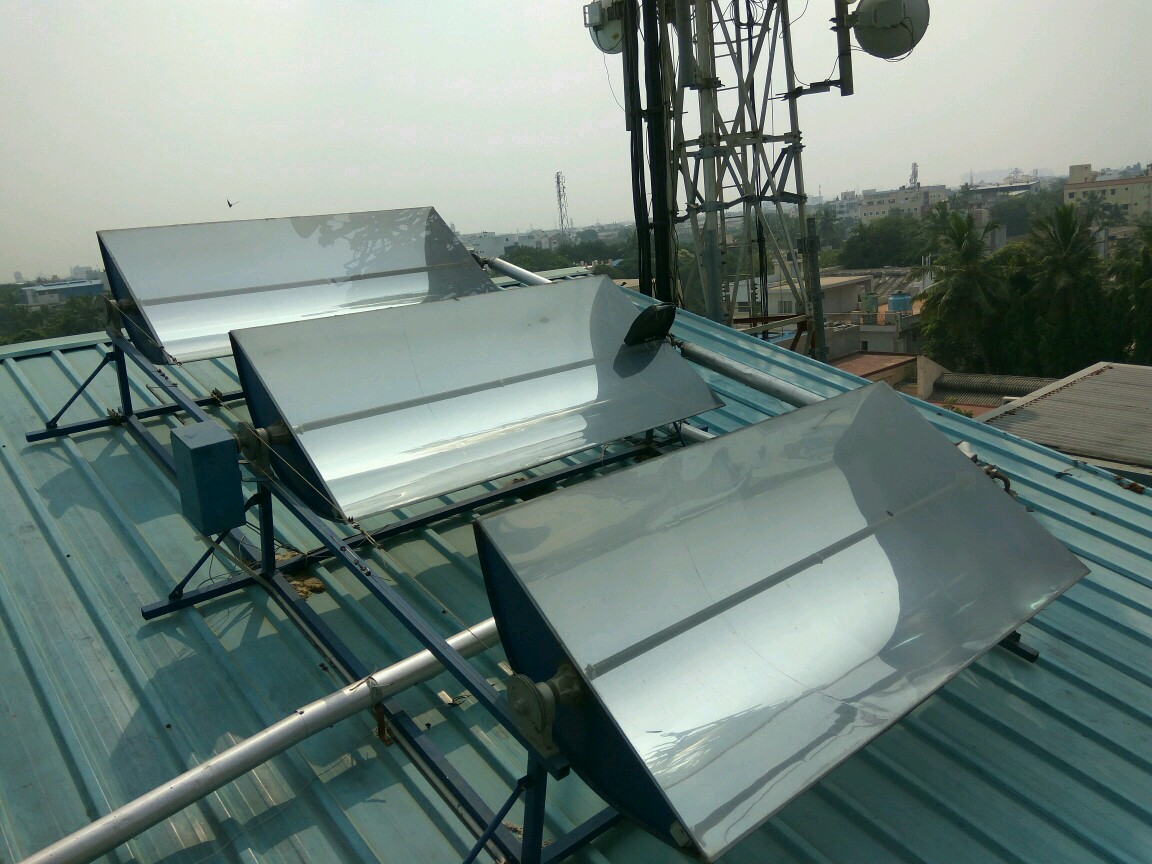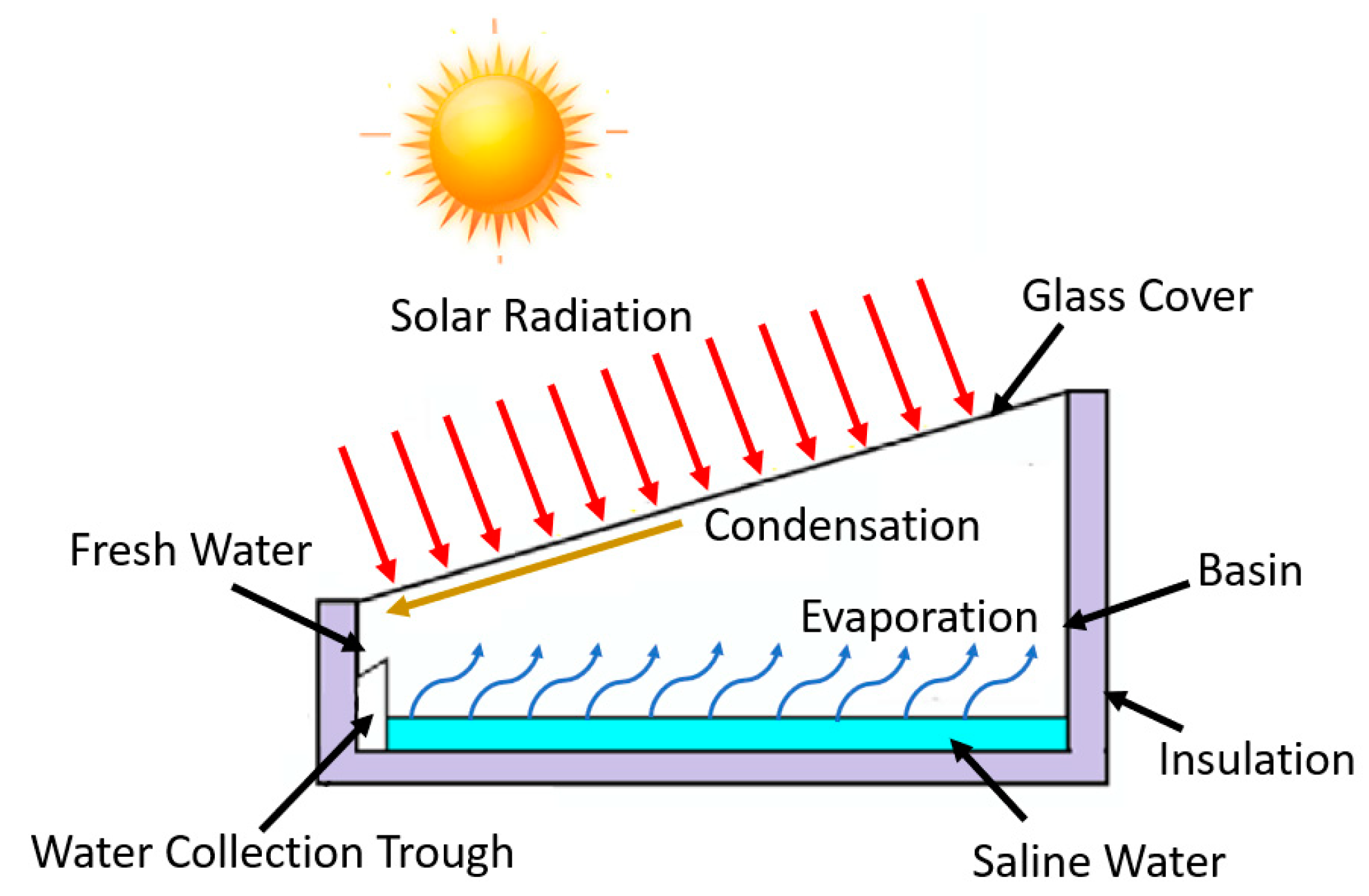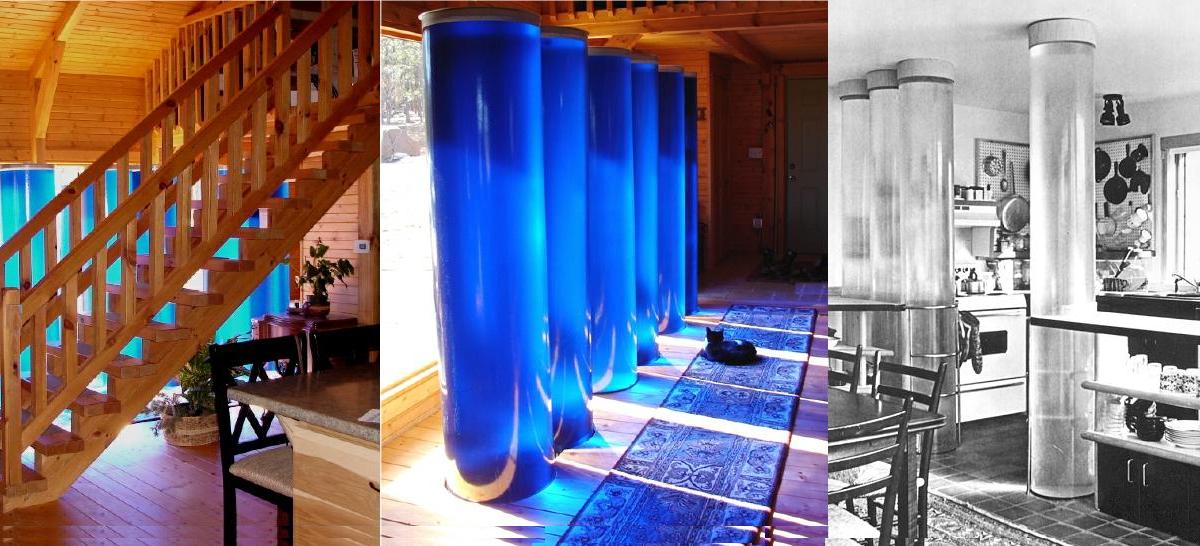I use a solar shower when I travel; it's pretty impressive how comfortably warm the water gets. Though if you want to wash long hair, you have to be quick or you'll have to rinse with a spare bottle of cold water.

I know this really handsome guy who used to heat his outdoor pool by looping water-filled black-painted garden hoses on the roof. The hose was connected to the output of the pool filter pump and once warmed, the water flowed back into the pool. The pump timer was set to run each day for several hours. It worked!
There are also methods of using water that's been heated on the roof through a solar collector. One way to use the heated water is to allow it to flow through a heat exchanger, so that its heat can be distributed to heat rooms inside your house. Hot water can be used to heat air, which is then distributed throughout the living space by HVAC; warm water can be circulated through tubes in floors and walls, which then radiated into the rooms; or hot water could heat a space using a traditional radiator system. Hot water generated by a solar collector can also be used for washing and showering rather than for space heating.

Here's a diagram of the flat-plate solar collector that sits on the roof:

As you can see, water flows through tubes that are sandwiched between a cover and a layer of insulation. Solar energy heats the water while the insulated box minimizes how much heat is transferred to the ambient environment before the water flows into the house. After the heat leaves the water, it returns to the solar collector to be heated again, in a closed loop. Flat plate collectors can hold onto about 60% of the solar energy they collect, depending on how much glazing (which doesn't let IR back out) and insulation used. This works well if water needs to be heated from between ten to fifty degree Celsius above the outside temperature, but in cold climates more glazing and insolation may be need, or for even more efficiency (and therefore hotter water), evacuated tube systems or parabolic troughs may be preferable. Parabolic troughs focus sunlight on a tube carrying the medium being heated. Parabolic troughs concentrate more sunlight on less fluid; in favorable sun conditions they get water hot enough to boil, but these systems are more complicated to deal with when sun-tracking systems are employed. Often the working fluid being heated is either pressurized water (pressurized because it needs to be kept in its liquid phase) or a medium that freezes at low temperatures; a heat exchanger is therefore necessary to transfer the heat to the water in the house.

Water is great for storing energy because it has a high specific heat capacity. Though it takes a longer time (more energy) to heat water up to a certain temperature compared to other materials, water also holds more energy per degree a given mass is heated, and cools more slowly than many other materials such as concrete. (The fact that water takes a long time to heat up and cool down is one reason coastal areas have milder climates: the ocean stays cooler than the land during summer, providing a cool sea breeze, but the ocean also holds onto the massive amount of heat that's been slowly absorbed during the hot summer days; since water doesn't radiate heat off into space nearly as quickly as land areas do, the ocean gently warms the coast during the winter because it's warmer by comparison.) This suggests another way to keep a building's interior warm using water: use columns of water as a thermal mass. Solar heat could be stored in other thermal masses, such as slabs of concrete or containers of sand, but since water gives up its heat more slowly it keeps the interior comfortable for a longer time after the sun has set. This can be incorporated into a passive solar home design and works with no mechanical parts.
https://www.howtogosolar.org/media/posts/6/water-tube-blue-solar-heat-storage.jpg
Solar energy can also be used to make a still, and thus purify water so it's safe to drink. Water doesn't need to be distilled to be made safe from microbial contamination; it can be pasteurized by heating it up to 65 degrees Celsius for six minutes. This is useful in places that don't have a safe water supply, saves on biomass fuel often used to heat water otherwise, and generates no smoke or exhaust.

Solar energy can be desalinate seawater, and then that water can be used to grow food. We can cover the whole FEW Nexus in one installation - this one of the great uses for Concentrating Solar Power. In this system, mirrors concentrate sunlight on a central tower; heat energy is used to boil water; the distillate is used to grow hydroponic crops, and the heat is used to keep greenhouses warm at night. If nutrients are sources from composted organic waste and water is recycled through the hydroponic system, this closes loops. This method is already being used to grow tomatoes in the Australian desert at Sundrop Farms.

Is there anything that water, sunlight and plant growth can't accomplish together?

In this geodesic greenhouse design, the above-ground pond can be used to raise fish for aquaculture, which provides nutrients to the plants grown in the greenhouse. The plants then purify the water for the fish. The glazing traps heat energy inside the structure, which is moderated by vents and a central air system powered by solar energy. Water, food and energy work together as a system.

No comments:
Post a Comment